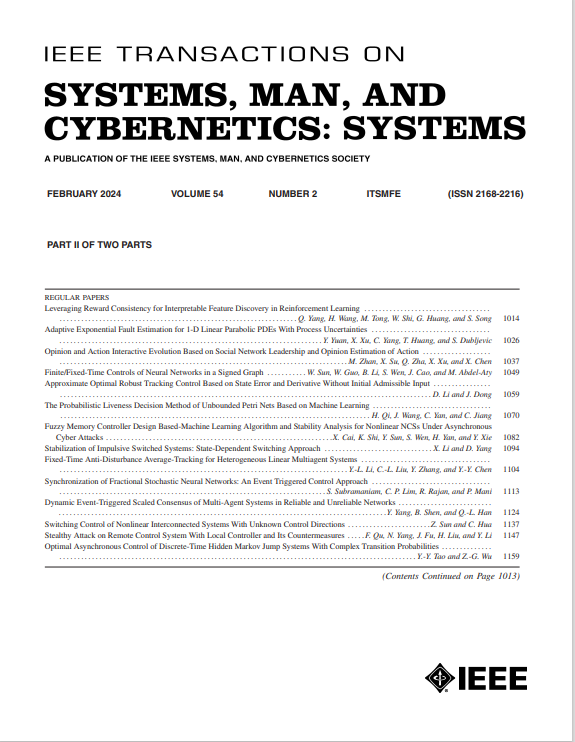Adaptive State Constrained Control of a Flexible Riser System With Transient Performance
IF 8.6
1区 计算机科学
Q1 AUTOMATION & CONTROL SYSTEMS
IEEE Transactions on Systems Man Cybernetics-Systems
Pub Date : 2025-03-18
DOI:10.1109/TSMC.2025.3547054
引用次数: 0
Abstract
A novel adaptive constraint control approach is proposed for flexible riser systems characterized by uncertain parameters and external disturbances, aimed at achieving the desired transient performance. By combining Hamilton’s principle with partial differential equations (PDEs), the physical model is transformed into a dynamic model. Considering the boundary position constraint, a boundary controller is built using the tangent barrier Lyapunov function (BLF) to mitigate vibrations. In order to ensure the convergence of the boundary position error at a predetermined rate, the control approach incorporates a performance function to attain the necessary transient performance. An auxiliary term is defined to counteract the impact of coupling terms that remain during the decoupling process of PDEs. Finally, the above scheme is further validated through MATLAB simulations.具有暂态性能的柔性立管系统的自适应状态约束控制
针对具有不确定参数和外部干扰的柔性立管系统,提出了一种新的自适应约束控制方法,以达到期望的暂态性能。将Hamilton原理与偏微分方程相结合,将物理模型转化为动力学模型。考虑边界位置约束,利用切线势垒Lyapunov函数(BLF)建立边界控制器以减轻振动。为了保证边界位置误差以预定速率收敛,该控制方法引入了性能函数以获得所需的瞬态性能。定义了一个辅助项来抵消偏微分方程解耦过程中遗留的耦合项的影响。最后,通过MATLAB仿真对上述方案进行了进一步验证。
本文章由计算机程序翻译,如有差异,请以英文原文为准。
求助全文
约1分钟内获得全文
求助全文
来源期刊

IEEE Transactions on Systems Man Cybernetics-Systems
AUTOMATION & CONTROL SYSTEMS-COMPUTER SCIENCE, CYBERNETICS
CiteScore
18.50
自引率
11.50%
发文量
812
审稿时长
6 months
期刊介绍:
The IEEE Transactions on Systems, Man, and Cybernetics: Systems encompasses the fields of systems engineering, covering issue formulation, analysis, and modeling throughout the systems engineering lifecycle phases. It addresses decision-making, issue interpretation, systems management, processes, and various methods such as optimization, modeling, and simulation in the development and deployment of large systems.
 求助内容:
求助内容: 应助结果提醒方式:
应助结果提醒方式:


